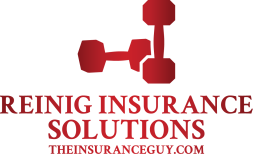(Helpful hints to help reduce your claims and manage your insurance costs
- Make safety and risk management a part of your club’s internal operations. As part of a regular staff meeting, club owners should also discuss risk management issues. Some sample topics of discussion would be; equipment maintenance, problem wet areas, and child care procedures.
- Use a separate waiver document. The problem with most waivers is that they are buried within all of the other wording in a membership agreement form. Some waivers are even printed on the back of an agreement or are written so poorly that they wouldn’t hold up no matter how conspicuous it looks. By having a separate Waiver & Release Form for members to sign, the club can demonstrate that they have warned their clients of the possible dangers of working out. The form is then simply stapled to the club’s membership agreement and kept as a permanent record.
- Go above and beyond the call of duty to make sure that if a member is injured at your club, that you (the owner), personally follows up with that individual to make sure they are O.K. Offer to freeze their membership, send flowers, provide a free personal training session, or extend their agreement by two months…whatever it takes to make them happy. Offering to pay for their deductible or medical co-pay does not implicate you in any way. Be sure to document every conversation, act of kindness, and follow up call. Send in an incident report to your agent and let them know your opinion as to client’s disposition during and after the incident.
- Fix the small stuff at your club. Roof leaks are a particular problem that can affect your ability to maintain competitive property insurance rates. A club that has backup of sewer & drains, clogged gutters that cause interior damage and roofs that need to be updated, may result in the club’s ability to even buy property insurance. Do not use your insurance policy as a “maintenance” policy. Save it for the big stuff.
- Get rid of your “museum” pieces of equipment. Keep your equipment fresh, your cables updated, and your flooring (especially the wet areas) safe. A simple procedure like stenciling your club’s logo on all of your treadmill decks can help eliminate the problem of a member stepping on a moving belt because they couldn’t see if it was running or not.
- Chose the correct property and building insurance coverage limits:
- a) Contents: Consider the replacement value of all your equipment, inventory, computers, phone systems, and furniture. Do not make the mistake of choosing a low limit to save on premium costs. Property insurance is relatively cheap. A typical club will pay approximately $350 a year for every $100,000 of protection. There is nothing worse than finding out you are underinsured AFTER the fire or hurricane.
- Tenant Improvements: Whether or not you or your landlord paid for your “build-out” costs, your lease will probably require that you are responsible for any “interior improvements” in the event of a fire or any other property loss. Therefore, you will need to estimate this cost and add this additional coverage to your application.
- Loss of Business Income: This is an amount of protection that will replace your income in the event your club would have to close due to a covered property loss (fire, tornado, roof collapse, etc). We recommend that you try to protect at least 4 months of revenue. However, only you can determine how much coverage, if any, you want to purchase to replace your income if you are shut down as a result of a major catastrophe.
- Building Coverage: Just like your contents protection, you need to determine the replacement value to rebuild from the ground up. This figure can vary depending on the type of construction and the area of the country you are located. It is often helpful to consult a local contractor to determine the proper limit. Keep in mind you are the one who is ultimately responsible for choosing the proper protection limits.
- Read your Exclusions & Limitations: Nobody reads their insurance policies; not even me. However, we should all read the areas of the policies called “exclusions and limitations”. This is where you will find out what you are NOT covered for. Reading your policy AFTER hurricane Charlie comes through, is not the time to be checking on your insurance coverage.
Ken Reinig is President of Association Insurance Group. If you have any questions or would like to obtain free risk management information, he can be contacted at ken@clubinsurance.com.

